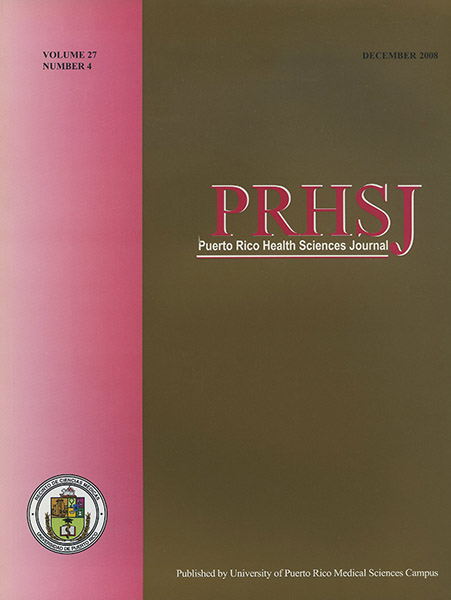Abstract
Background: Patch testing has been used as a screening tool to identify those allergens responsible for the development of allergic contact dermatitis. The objectives of this study were to identify the most common allergens found at the Patch Testing Clinic (PTC) of the Department of Dermatology, Medical Sciences Campus (MSC) University of Puerto Rico (UPR), to correlate patch testing results with demographics and clinical data, and to compare the results with similar studies in other institutions. Methods: A retrospective analysis of the records of patients who underwent patch testing for suspected acute allergic contact dermatitis at the Department of Dermatology of the Medical Sciences Campus of the UPR, from March 31, 2001 to May 31, 2005. Information regarding demographics, medical history, occupation, and test results was retrieved. Results: The most common allergens identified were: carba mix, nickel sulphate, thiuram mix, paratertiary butylphenol formaldehyde resin, paraphenylenediamine, and neomycin sulphate. The most commonly affected area was the hands. A correlation was observed between paratertiary butylphenol and involvement of the feet, paraphenylenediamine and generalized dermatitis, and potassium dichromate and occupational exposure. Conclusions: Patch testing remains a worthwhile and quick diagnostic tool for the evaluation of patients with suspected allergic contact dermatitis.
Authors who publish with this journal agree to the following terms:
a. Authors retain copyright and grant the journal right of first publication with the work simultaneously licensed under a Creative Commons Attribution License that allows others to share the work with an acknowledgement of the work's authorship and initial publication in this journal.
b. Authors are able to enter into separate, additional contractual arrangements for the non-exclusive distribution of the journal's published version of the work (e.g., post it to an institutional repository or publish it in a book), with an acknowledgement of its initial publication in this journal.
c. Authors are permitted and encouraged to post their work online (e.g., in institutional repositories or on their website) prior to and during the submission process, as it can lead to productive exchanges, as well as earlier and greater citation of published work (See The Effect of Open Access).
